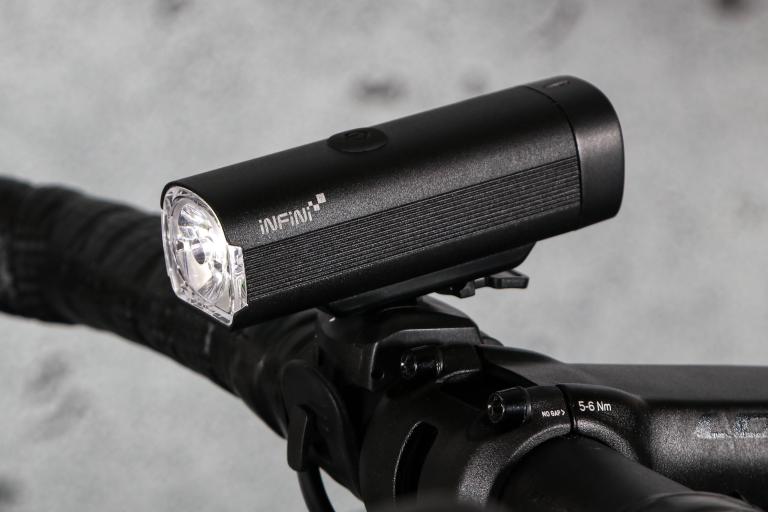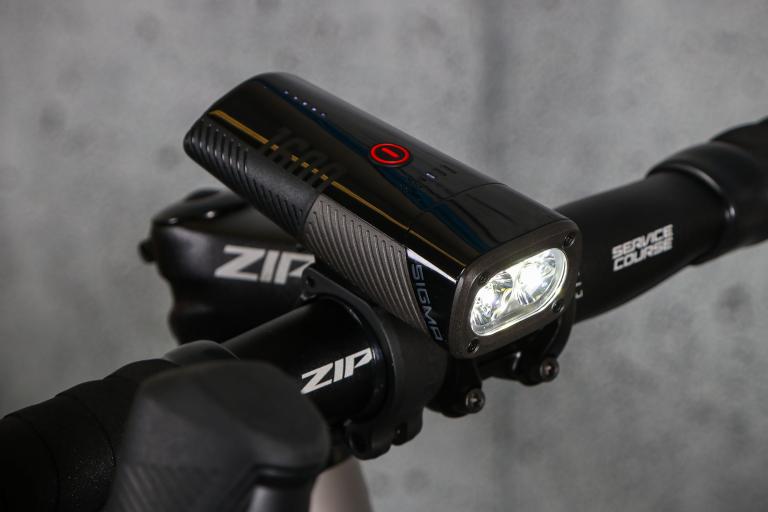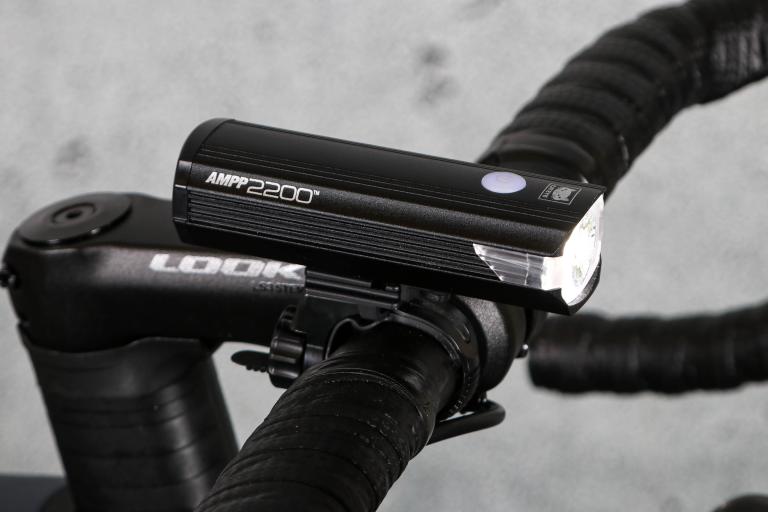- News
- Reviews
- Bikes
- Accessories
- Accessories - misc
- Computer mounts
- Bags
- Bar ends
- Bike bags & cases
- Bottle cages
- Bottles
- Cameras
- Car racks
- Child seats
- Computers
- Glasses
- GPS units
- Helmets
- Lights - front
- Lights - rear
- Lights - sets
- Locks
- Mirrors
- Mudguards
- Racks
- Pumps & CO2 inflators
- Puncture kits
- Reflectives
- Smart watches
- Stands and racks
- Trailers
- Clothing
- Components
- Bar tape & grips
- Bottom brackets
- Brake & gear cables
- Brake & STI levers
- Brake pads & spares
- Brakes
- Cassettes & freewheels
- Chains
- Chainsets & chainrings
- Derailleurs - front
- Derailleurs - rear
- Forks
- Gear levers & shifters
- Groupsets
- Handlebars & extensions
- Headsets
- Hubs
- Inner tubes
- Pedals
- Quick releases & skewers
- Saddles
- Seatposts
- Stems
- Wheels
- Tyres
- Health, fitness and nutrition
- Tools and workshop
- Miscellaneous
- Tubeless valves
- Buyers Guides
- Features
- Forum
- Recommends
- Podcast
review
 Exposure Sirius.jpg
Exposure Sirius.jpg£99.95
VERDICT:
Excellent commuter light benefits from new DayBright mode for daytime visibility boost
Weight:
84g
Contact:
At road.cc every product is thoroughly tested for as long as it takes to get a proper insight into how well it works. Our reviewers are experienced cyclists that we trust to be objective. While we strive to ensure that opinions expressed are backed up by facts, reviews are by their nature an informed opinion, not a definitive verdict. We don't intentionally try to break anything (except locks) but we do try to look for weak points in any design. The overall score is not just an average of the other scores: it reflects both a product's function and value – with value determined by how a product compares with items of similar spec, quality, and price.
What the road.cc scores meanGood scores are more common than bad, because fortunately good products are more common than bad.
- Exceptional
- Excellent
- Very Good
- Good
- Quite good
- Average
- Not so good
- Poor
- Bad
- Appalling
The Exposure Sirius Mk6 DayBright is a really good commuting light that mounts easily to the handlebar and pumps out a generous 575 lumens. Its new DayBright mode increases your visibility during daytime rides with specific pulse pattern designed to be seen up to a mile away.
- Pros: DayBright mode, simple to use, good quality
- Cons: Not cheap...
Every year lights get a bit brighter, and the new Sirius is ramped up 25 lumens from its previous 550. It's a small gain, and probably not enough that you'll notice if you already own that model. But as well as getting a useful brightness boost, the Sirius features the company's new DayBright technology, being rolled out to several models in its 2018 range.
> Find your nearest dealer here
There's more interest from cyclists wanting to run lights for extra visibility during daytime riding, and Exposure has developed a mode to suit that uses a specific pulse pattern (one big, three really fast pulses) and lumen intensity. It reckons this pulse pattern is the most noticeable, which should help motorists spot you from at least a mile away, even riding through a busy city.
When in the normal see-where-you're-going-mode, the Sirius puts out a really good beam of light, with a tight focus on the patch of road you're cycling along. It's a clean white light as well and there's enough reach that you can tackle dark, unlit country lanes, though it wouldn't be my first choice for a commute that primarily consisted of such. For a commute that mixes urban with a little countryside cycling it's manageable.
Build quality
Like all Exposure lights, the Sirius is a lovely made unit. It's CNC-machined from aluminium and feels sturdy and well built while also being very compact and light. New on this latest version is the lens hood being machined as an integral part of the main body.
The charge plug is protected by a rubber cap and the new on/off button is a nice stainless steel switch that feels more tactile than the old rubber button, easier to use on the move and while wearing gloves.
A double tap of the new switch brings the light to life, and a small LED indicates both which brightness setting you're in and the remaining battery juice.
The light powers up into the brightest mode, helpfully indicated by a green LED if the sheer brightness of the light doesn't make this clear enough. Cycle through to medium and low modes, amber and red LEDs respectively, to choose the amount of brightness you need for your ride home.
> Buyer's Guide: The best 2017/2018 front lights for cycling
That small LED also indicates the battery life. Solid green indicates it's fully charged, amber pulse and you're about halfway through the available run-time, and a red flash is getting close to empty.
During charging the LED on the back of the light flashes green when it's being charged, turns to a solid green when it's 95% charged, with the remaining 5% being trickle charged. It takes three hours to fully charge from the mains.
There are seven modes available with the Sirius, helpfully printed on the bottom of the light. You select a different mode by pressing and holding the power button (starting with the light turned off) until the number of LED flashes matches the mode you want.
To activate DayBright mode is simple: ensure the light is in program one (the default setting for the light from the factory) then power it up by double pressing the button; then press and hold the power button to activate the flash mode.
> Do cyclists need daytime running lights?
Maximum run-time is a massive 36 hours but stick it on full brightness and you've got 2 hours. In practice I found this to be on the money, no more and no less. The different modes allow you to stretch the battery life so you can fine-tune the brightness and run-time to match the particulars of your commute.
Bar clamp
The light comes with a plastic bracket with a curve that fits a regular round handlebar, and a large rubber O-ring secures it in place. Riding over rough roads at speed and there's little wobble or bounce; it's really very good. You can remove the whole thing in a second, ideal if you lock your bike up outside.
Conclusion
There's a lot to like about the new Sirius. For urban commuting it is plenty bright enough, and the new DayBright is a useful mode that I expect we'll see become a lot more popular given everything that is happening on our roads these days.
It might seem expensive, but it's a really well-made light backed up by a two-year warranty and it all works beautifully. It has a reassuring feeling of quality, which you definitely want in a front light and especially one at this price.
Verdict
Excellent commuter light benefits from new DayBright mode for daytime visibility boost
road.cc test report
Make and model: Exposure Sirius MK6 DayBright
Size tested: Max Lumens 575
Tell us what the light is for, and who it's aimed at. What do the manufacturers say about it? How does that compare to your own feelings about it?
Exposure says: "The Sirius has upgraded CNC aluminium bodywork, making it even tougher for the urban commuter or road rider. Featuring Optimised Mode Selector, 7 programs, side illumination and Fuel Gauge displaying the remaining battery life using a traffic light system making it clear when you need to recharge and it can even be used as a power pack using Smart Port +. With a powerful output this slick unit lights up the streets both day and night."
Tell us some more about the technical aspects of the light?
Exposure lists:
DayBright
Smart Port +
Cable Free Design
Intelligent Thermal Management
Optimum Mode Selector
Fuel Gauge
2 Year Warranty
Made in the UK
Rate the light for quality of construction:
10/10
Solid CNC machined light with new stainless steel power button.
Rate the light for design and ease of use. How simple was the light to use?
10/10
It's a cinch to use. Quickly mounts to the handlebar and a single button to fire it up.
Rate the light for the design and usability of the clamping system/s
9/10
Simple O-ring rubber band and curved bracket, fits most handlebars easily and is sturdy at speed and on rough roads.
Rate the light for waterproofing. How did it stand up to the elements?
9/10
Used it in the rain and it was fine, and it's survived hosepipe dousings during post-ride cleanups.
Rate the light for battery life. How long did it last? How long did it take to recharge?
8/10
Battery life is good on the highest settings, 2 hours arguably enough for most commutes, but seven modes let you reduce the brightness and stretch the run-time if needed.
Rate the light for performance:
9/10
It might not be the cheapest option, but it's a solid, dependable and powerful front light for commuting. The new DayBright mode will appeal to many cyclists wanting to boost their daytime visibility.
Rate the light for durability:
8/10
It's solidly built and there's a two-year warranty in case you have any issues down the road.
Rate the light for weight:
8/10
Yeah, it doesn't weigh much at all.
Rate the light for value:
8/10
Considering its performance, durability, ease of use and attention to detail, the Sirius offsets its high price and I reckon is good value. It's a light that won't let you down and that's what you want in a daily commuter front light.
Tell us how the light performed overall when used for its designed purpose
Lights the way ahead with good brightness and plenty of modes to suit different situations.
Tell us what you particularly liked about the light
New DayBright mode is great on quiet country roads in low light conditions. It's small and light on the handlebars and the new stainless steel button makes it much nicer to use.
Tell us what you particularly disliked about the light
Isn't really much to dislike. If it's not bright enough just look higher up the Exposure Lights range.
Did you enjoy using the light? Yes
Would you consider buying the light? Yes
Would you recommend the light to a friend? Yes
Use this box to explain your score
It's a really solid and dependable light for daily commuting, just bright enough for dark lanes, and the new DayBright mode is great for daytime cycling.
About the tester
Age: 31
I usually ride: My best bike is:
I've been riding for: 10-20 years I ride: Every day I would class myself as: Expert
I regularly do the following types of riding: road racing, time trialling, cyclo-cross, commuting, touring, mountain biking
David worked on the road.cc tech team from 2012-2020. Previously he was editor of Bikemagic.com and before that staff writer at RCUK. He's a seasoned cyclist of all disciplines, from road to mountain biking, touring to cyclo-cross, he only wishes he had time to ride them all. He's mildly competitive, though he'll never admit it, and is a frequent road racer but is too lazy to do really well. He currently resides in the Cotswolds, and you can now find him over on his own YouTube channel David Arthur - Just Ride Bikes.




I think you need to know the proportion of the total UK vehicles on the road for each model represents for that data to be meaningful....
If a Trump supporter can admit they were wrong to get involved in the Jan 6th malarkey, and turn down his free pardon, then there is a bit of hope ...
No drivers involved in any of this. I'm wondering if the journalist who wrote it is actually a car itself....
Would be good to get an idea of the supplied mount(s) suitability for D-posts in any rear-lights review....
...
While its own mess, perhaps the recent US fandango should remind us of the limits to foresight in people's "enlightened self-interest" *. We have...
If its on Aliexpress then it's probably exactly the same as the Beam Corky. One might say, suspiciously so…
Agree this article does not explain it well. Hopefully DC Rainmaker or someone else sufficiently geeky will do a detailed review soon (DC Rainmaker...
Some kind of link is a good idea (your national train card is used in many facilities in NL - indeed you can even hire bikes with that also)....
I have heard - and from knowledgeable people - that the magistrates court can be even more of a wild lottery than crown court. Volunteer amateurs,...